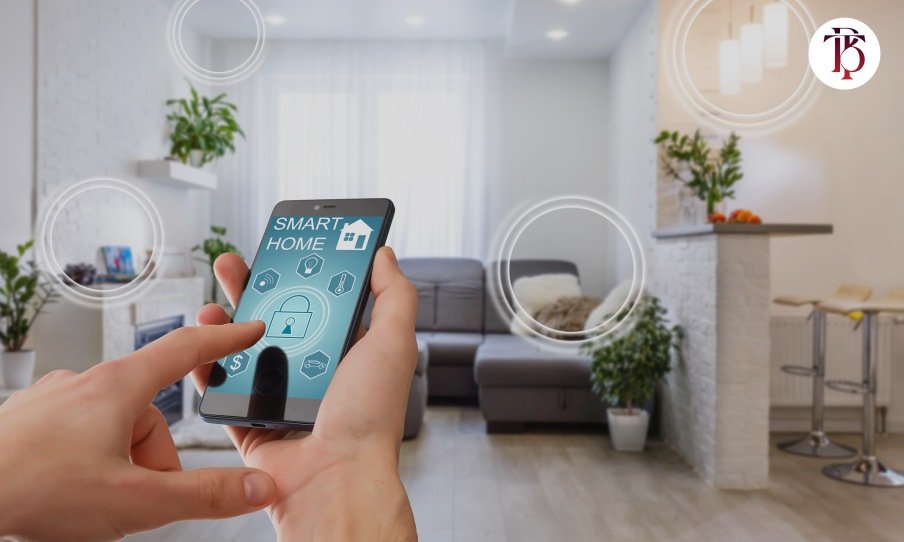Rise of Smart Living: How Smart Devices Are Making Everyday Life Easier

Smart living grows fast. Smart devices enter homes, offices, and even streets. People connect phones, watches, lights, and speakers. Devices talk to each other. Life feels smoother. Tasks shrink. Stress falls. Comfort rises.
What Smart Living Means
Smart living means daily life links with technology. Devices work together. Sensors track data. Apps show results. People see insights. Routines adapt. Choices get simpler. Energy saves. Time frees.
Smart living does not mean only luxury. It means practical help. A student can track sleep with a smart band. A worker can adjust room light with a voice command. A parent can check a child’s study progress on a tablet. Every case shows one truth: smart tools make life easy.
The Growth of Smart Devices
Smart devices grow with speed. Phones lead the path. Watches follow. Speakers join. Appliances connect. Even cars sync. This growth comes from better networks, cheaper chips, and wider demand.
Data shows the scale. Billions of devices connect worldwide. Smart speakers spread in kitchens. Smart cameras cover doors. Smart plugs control appliances. The growth looks steady, and the trend points upward.
Smart Homes: Daily Comfort
Homes show the best example of smart living. A smart home has lights, fans, thermostats, and cameras all linked. A person speaks, and the system acts. Lights dim. Doors lock. Temperature adjusts. All without effort.
Comfort grows with control. People set routines. For example, at 7 AM, curtains open, coffee brews, and news plays. At 11 PM, lights fade, alarms arm, and doors lock. The home feels alive.
Smart homes also save energy. Sensors track usage. Systems turn off idle devices. Bills shrink. Waste drops. Environment gains.
Smart Workplaces: Efficiency First
Smart devices also change work. Offices use smart systems to manage light, air, and power. Sensors check room use. If a room stays empty, lights turn off. Airflow reduces. Energy saves.
Smart assistants plan meetings. They scan calendars. They find free slots. They send invites. Workers spend less time on scheduling.
Security grows too. Smart cameras track entries. Digital locks use codes or faces. Workplaces feel safer.
Smart Health: Care in Your Hand
Health devices bring strong impact. Smart watches track steps, sleep, and heart rate. Apps show patterns. Users learn habits. Doctors see data.
Remote care grows. Patients wear devices. Doctors monitor from distance. Alerts send fast if health risks rise. Elderly care improves. Families feel calm.
Mental health gains too. Apps remind users to breathe, stretch, or pause. Mood trackers note patterns. People gain awareness. Stress falls.
Smart Mobility: Travel Made Easy
Travel changes with smart devices. Cars connect to phones. Maps guide with real-time updates. Sensors check traffic. Routes adjust. Time saves.
Public transport grows smarter too. Apps show arrivals. Digital cards replace paper tickets. Payments happen with taps. Journeys feel smooth.
Safety increases. Cars warn of danger. Buses track seats. Bikes unlock with codes. Travel grows safer, faster, lighter.
Smart Shopping: Simple Choices
Shopping shifts with smart tech. Voice assistants place orders. Fridges scan stock. Apps suggest recipes. Items refill on time.
Payment grows faster. Phones tap to pay. Watches scan codes. Wallets go digital. Queues shrink. Frustration drops.
Stores track demand. Stock updates in real time. Shoppers find items quick. Both buyers and sellers win.
Benefits of Smart Living
Smart living saves time. Tasks reduce. People focus on what matters.
Smart living saves energy. Devices shut down when idle.
Smart living boosts safety. Cameras watch. Locks guard. Alerts warn.
Smart living improves health. Devices track. Apps remind. Doctors connect.
Smart living eases stress. Routines flow. Support stays near.
Challenges Ahead
Smart living faces issues too. Privacy is one. Devices collect data. Data may leak. Users need trust.
Cost is another. Not all devices stay cheap. For many, access feels hard.
Complexity adds stress too. Too many apps confuse. Too many updates frustrate. Balance is needed.
The Future of Smart Living
Future smart living looks brighter. AI grows sharper. Devices learn patterns better. They act without commands.
Homes may talk to cars. Cars may talk to offices. A full chain may connect. Imagine: Your watch tracks your health. It tells your fridge to suggest food. It tells your car to adjust seat comfort. It tells your office to schedule breaks. All flow in one system.
Sustainability will grow stronger. Smart farms will save water. Smart grids will share power. Smart cities will reduce waste.
Conclusion
Smart living is not far. It is here. Phones, watches, homes, cars—each device builds the chain. The chain makes daily life smooth, safe, and smart.
The rise will continue. The ease will spread. Smart devices will not just assist. They will guide, support, and connect. Life, in turn, will grow lighter, healthier, and richer.
